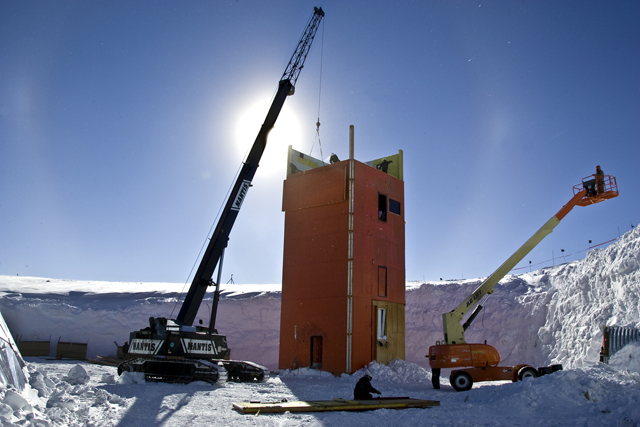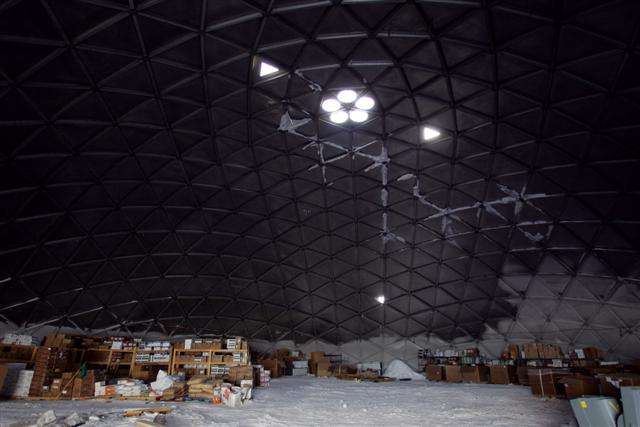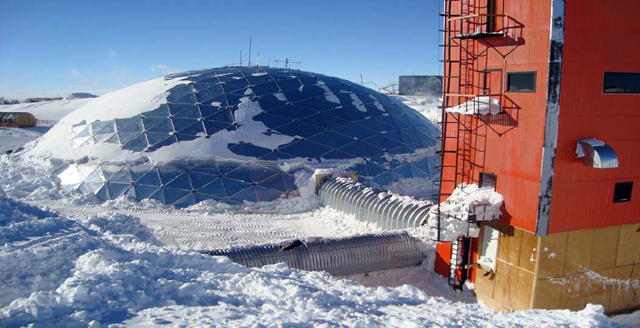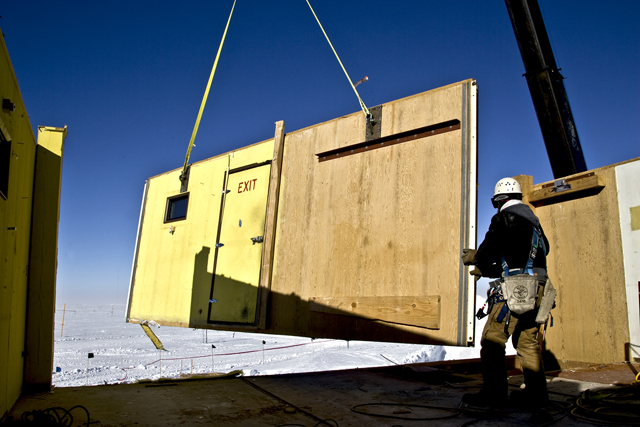|
Page 2/3 - Posted December 11, 2009
Going upPutting up the dome certainly wasn’t an easy task in the brief Antarctic summer, where ambient temperatures rarely reach 0 degrees Fahrenheit. The foundation proved to be the trickiest part because a crucial piece of machinery couldn’t handle the harsh conditions. 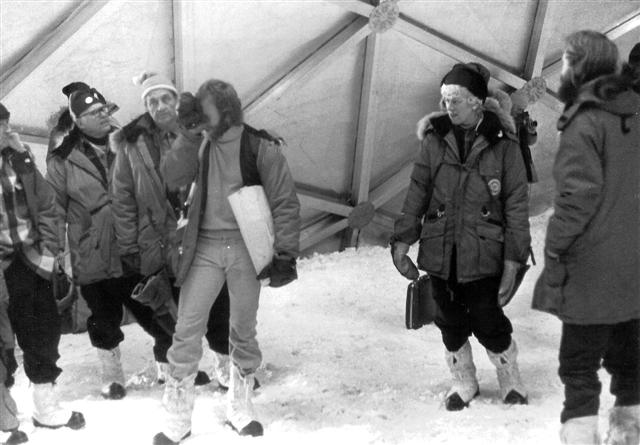
Photo Credit: R.W. Milton/Antarctic Photo Library
Ruth Siple in attendance at the dome dedication, Jan. 9, 1975.
The Seabees used a Peter Snow Miller, a Swiss snowplow used to clear roads in the Alps, to process the snow and work it up to the firmness necessary to support the dome’s wooden foundation footings. The same machine did double-duty in cutting a circular trench for the dome foundation and a trench for the “utilidor” for utility and sewage lines. The hydraulic machine constantly broke down and was “always a mess,” Mattis recalled. “The Peter Snow Miller was a major problem.” He said little of the dome actually went up in 1971-72. Most of the erection occurred the following season, 1972-73. “Basically, we went back down and did it,” Mattis said. During this time, the Seabees were also busy constructing a new power plant and arches to serve as a garage. Work on these structures and the interior dome buildings continued into the 1973-74 and 1974-75 seasons. Civilian contractors, including Marty, with the company Holmes and Narver Inc., mainly worked on the utilities. On Jan. 9, 1975, a group of dignitaries dedicated the new station, including Ruth Siple, wife of Paul Siple, the first South Pole winter-over leader in 1957. Bill Spindler worked as the South Pole station manager for a year in 1976-77, during the dome’s third year in service, and has been involved with the U.S. Antarctic program on and off for more than 30 years. An engineer by trade, Spindler also wintered twice more, in 2005 and 2008. The unofficial historian of the South Pole “When I showed up at Pole in 1976, the dome made the new station seem state-of-the-art,” he wrote in an e-mail. “No more collapsing snow tunnels, lots of storage space, and an instant icon for the U.S. Antarctic Research Program. “But snow happens, things get old, drifts build up and structures get stressed,” he added. “As an engineer, my feeling at this point is that the dome has outlived its usefulness at Pole and needs to go away before it becomes a structural hazard.” Time to goDuring the late 1980s, the NSF started preliminary planning for a new station, and at the time, the dome was sacrosanct, according to Spindler. “All plans for the new station included it, either as a cover for buildings, as it was in the existing station, a storage space, or perhaps even an insulated and heated structure. Some of the designs even included building another dome to match the original. “All of this suddenly was to change as a result of a loud noise heard by the 1988 winter-overs,” he explained. “They reported that it sounded like something broke.” A computer analysis at about the same time indicated that some of the aluminum dome foundation base ring beams might be overstressed, Spindler said. “The next summer the entire base ring was dug out, and yours truly got to crawl through the trench and inspect every node and every beam. Sure enough, I found cracks and broken beams at the predicted locations.” The damage was repaired, but the dream of keeping the dome in some capacity was broken. The winning design would call for a 65,000-square-foot building capable of sleeping about 150 people, elevated above the polar plateau and capable of being jacked up twice during its lifetime. The Antarctic Treaty The dome would have to go. But how? In 2005, to assess how the dome could be deconstructed, Mattis said he returned to the South Pole at the behest of the Navy Civil Engineering Corps (CEC)/Seabee Historical Foundation What did he think after seeing the dome for the first time in more than 30 years? “My first thought was, ‘wow.’ Why did I become a civil engineer? Because I wanted to see what I built, and here was something that lasted for much longer than it was designed to last. It’s still functional. It’s still working. It’s still providing its intended use. It was a feeling of pride. Just to go back and see it was great,” Mattis said. “It was in good shape,” he added. His recommendation to disassemble the dome is basically to reverse the order of construction — taking it apart from the top down.Back 1 2 3 Next |
"News about the USAP, the Ice, and the People"



For USAP Participants |
For The Public |
For Researchers and EducatorsContact UsU.S. National Science FoundationOffice of Polar Programs Geosciences Directorate 2415 Eisenhower Avenue, Suite W7100 Alexandria, VA 22314 Sign up for the NSF Office of Polar Programs newsletter and events. Feedback Form |

